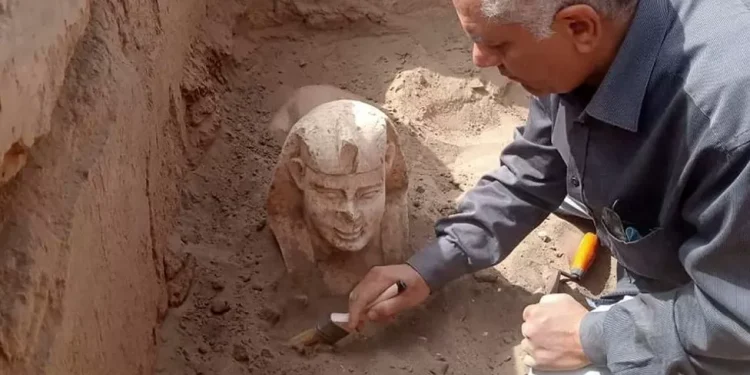By John Ikani
The antiquities ministry has announced the discovery of a sphinx-like statue and the remains of a shrine at the Hathor Temple, a well-preserved ancient site in southern Egypt.
The limestone sphinx, with a “smiley face and two dimples,” is believed to depict Roman Emperor Claudius, who ruled over North Africa from 41 to 54 AD.
The statue is significantly smaller than the iconic Sphinx at the Pyramids of Giza, standing at only a fraction of the height, but still boasts impressive and intricate carvings.
These artifacts were found in a two-level tomb located in the temple of Dendera, which is situated 450km (280 miles) south of Cairo, the capital of Egypt.

In addition to the sphinx statue, archaeologists uncovered a stone slab that features inscriptions in both demotic and hieroglyphic languages from the Roman era.
The limestone shrine, which has been described as “beautifully and accurately carved,” consists of a two-layer platform and a mud-brick basin from the Byzantine era.
Scholars are keen to study the markings on the stone slab, which may reveal more information on the identity of the statue.

Experts are viewing the recent discovery as a significant boon for the Egyptian tourism industry, which has been struggling in the face of economic crises.
The government is hoping that the unique and rich history of the country will draw tourists back to visit and learn about the treasures of Egypt.
The discovery will likely add to the already vast catalogue of archaeological sites and artifacts that make Egypt an attractive destination for history enthusiasts around the world.


































